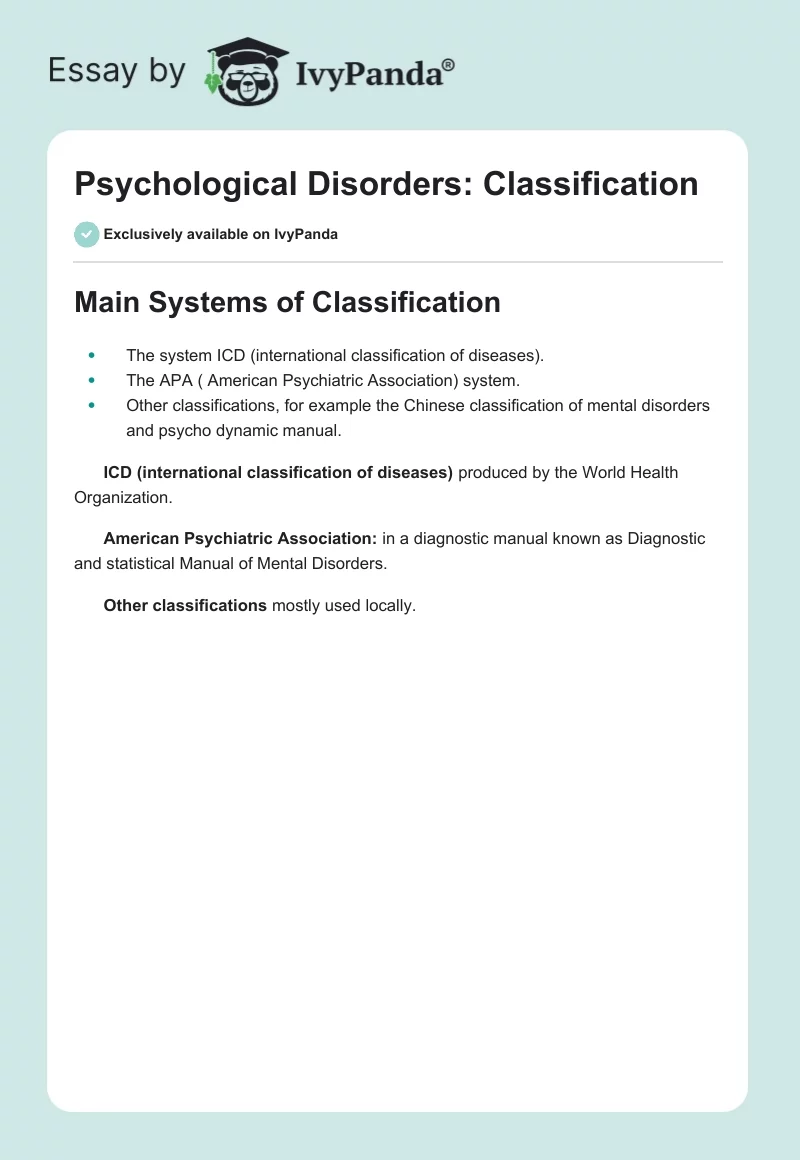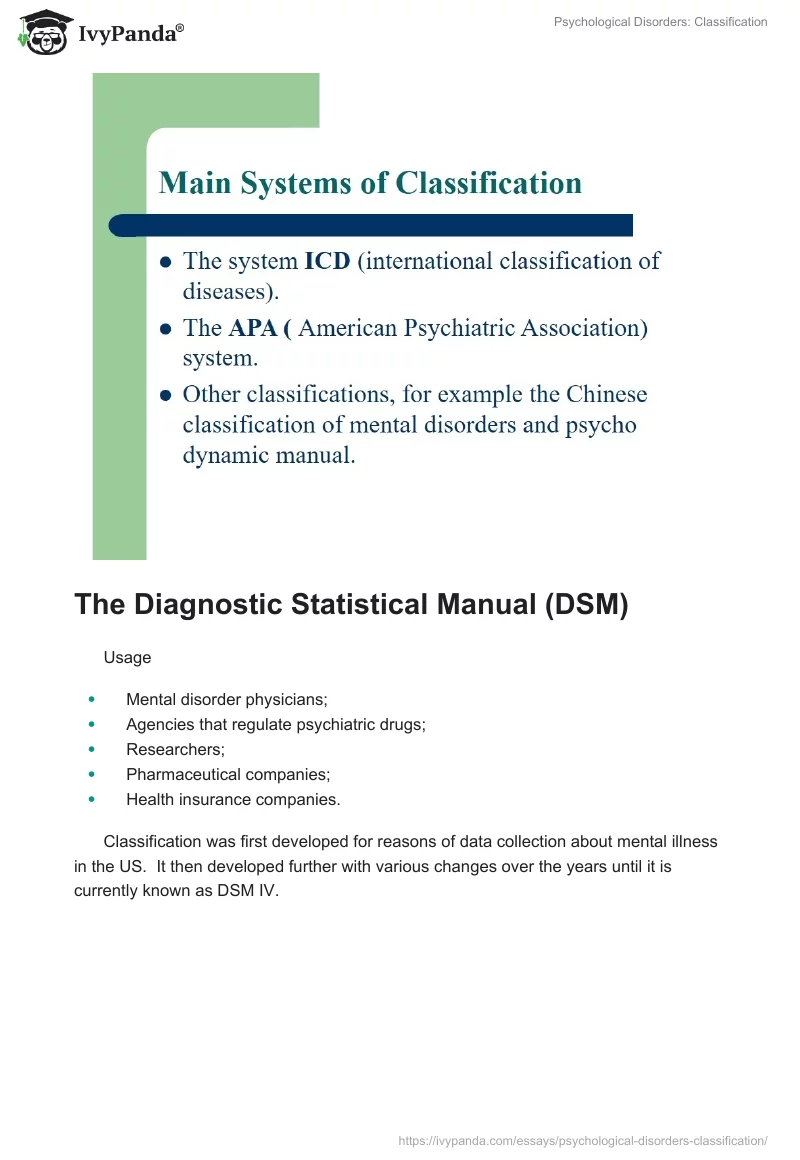Main Systems of Classification
- The system ICD (international classification of diseases).
- The APA ( American Psychiatric Association) system.
- Other classifications, for example the Chinese classification of mental disorders and psycho dynamic manual.
ICD (international classification of diseases) produced by the World Health Organization.
American Psychiatric Association: in a diagnostic manual known as Diagnostic and statistical Manual of Mental Disorders.
Other classifications mostly used locally.
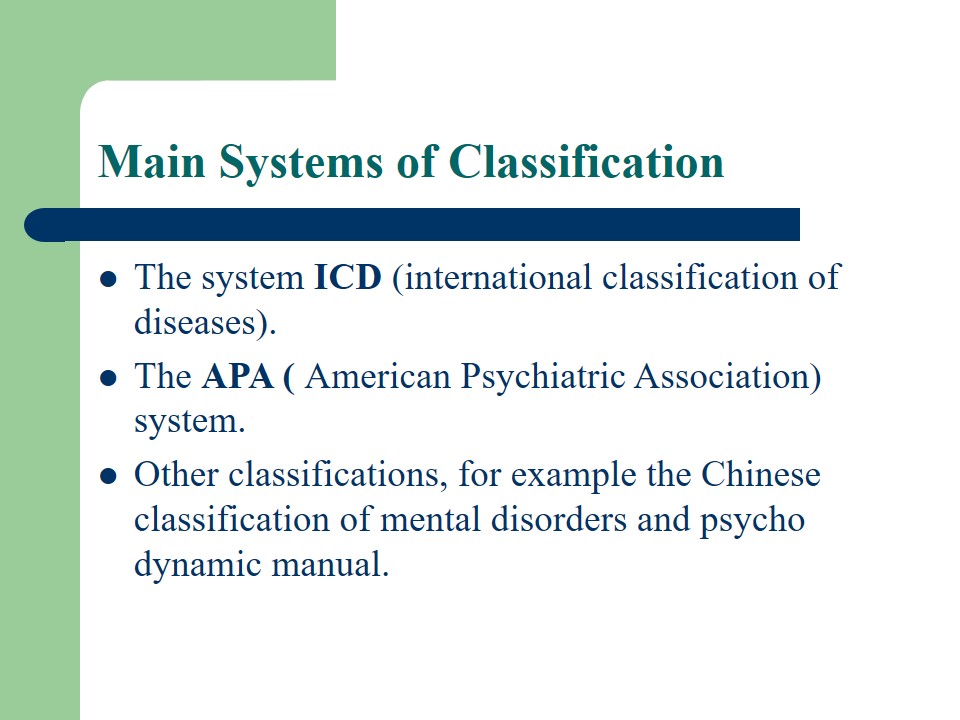
The Diagnostic Statistical Manual (DSM)
Usage
- Mental disorder physicians;
- Agencies that regulate psychiatric drugs;
- Researchers;
- Pharmaceutical companies;
- Health insurance companies.
Classification was first developed for reasons of data collection about mental illness in the US. It then developed further with various changes over the years until it is currently known as DSM IV.
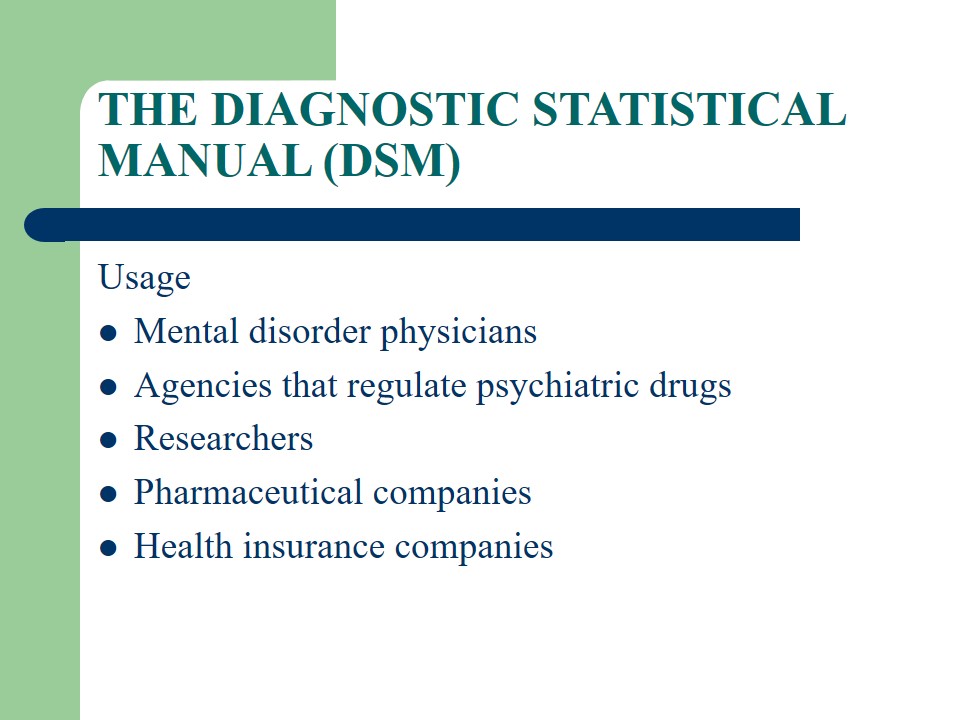
DSM IV
- Disorders listed as prototypes.
- Others grouped as non criterion, isolated and low-grade.
- Symptoms are sufficient to cause a disorder.
- Qualifiers: mild, severe and moderate.
- Disorders can be identified by codes.
The system organizes mental health diagnosis into five axes.
- Axis I – Clinical, developmental and learning disorders (anxiety disorders, mood disorders, depression, bipolar disorders, phobias, schizophrenia and ADHD).
- Axis II – Personality disorders, persuasive conditions and mental retardation conditions.
- Axis III – Physical disorders and acute medical conditions (injuries to the brain, disorders that may trigger other diseases or disorders).
- Axis IV – Factors contributing to the disorders, e.g. psychological and environmental factors.
- Axis V – Assessment scale for children below the age of 18 and is used globally.
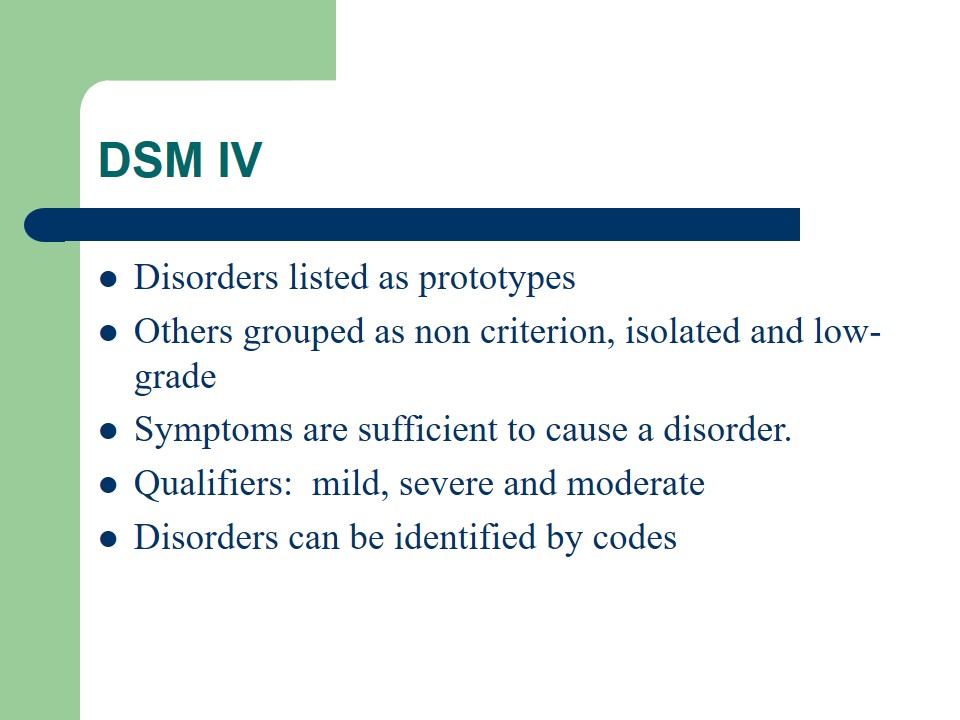
Anxiety Disorders
- Emotional state always accompanied by exhaustion or fatigue;
- Belong to axis I in DSM-IV classification;
- Different types;
- Diagnosis dependent on the type of disorder it is.
Types of anxiety disorders are: panic disorder, agoraphobia, generalized anxiety disorder, social anxiety disorder, separation anxiety, phobias, obsessive and compulsive disorder and post traumatic stress disorder.
The main cause of anxiety disorders is the lack of coordination between the amygdala that and the parabranchial nucleus in the brain. Low levels of the neurotransmitter, GABA, in the regulation of activity in the central nervous system therefore over activity and anxiety.
Common symptoms that often accompany anxiety are: Chronic, overstated worry, stress, and irritability that either causeless or in larger form than the situation requires. The physical symptoms, such as impatience, sleep troubles, trembling, headaches, overall tension in muscles, or sweating.
Treatment: Cognitive behavioral therapy, relaxation techniques, and biofeedback to control muscle tension. Medication in general include anti-anxiety drugs.
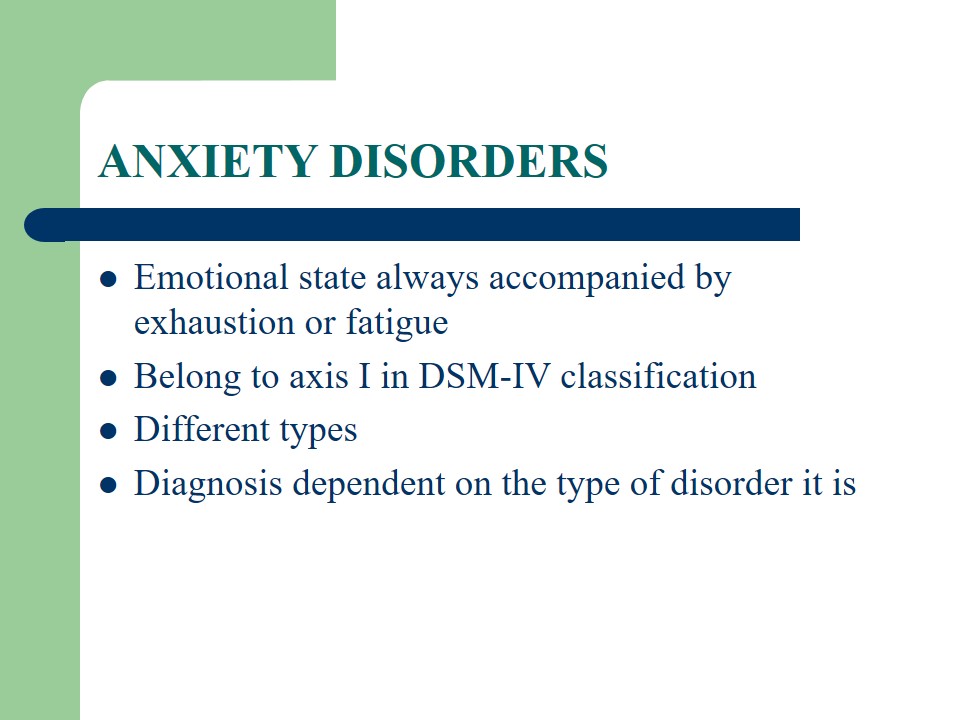
Somatoform Disorders
- Characterized by physical symptoms.
- The severity of the disorder and time span is affected by psychological factors.
- Recognized by the DSM-IV as of six types.
No identifiable cause of the physical symptoms – a mental disorder.
The physical symptoms can cause distress, disturb the functions of the patient socially and occupationally.
Types: The somatization disorder, hypochondriasis, the body dysmorphic disorder, pain disorder, conversion disorder, Somatoform NOS and undifferentiated Somatoform disorder.
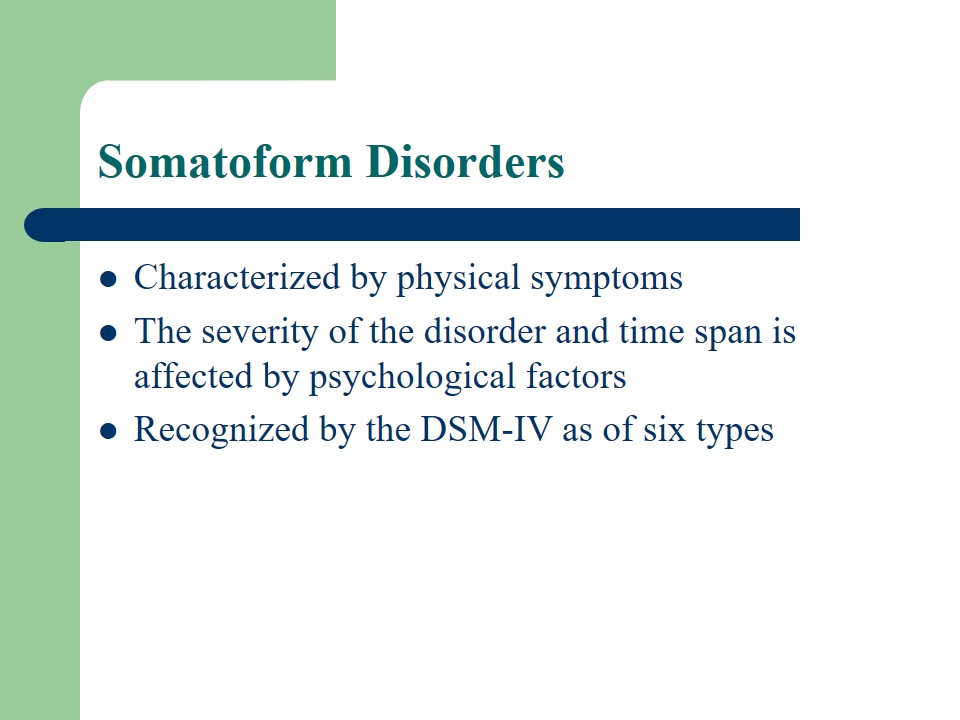
Mood Disorders
- Cause disturbance to the normal mood of a person.
- Two types of mood disorders – bipolar and unipolar (depression).
- Caused by imbalance in the chemical activity of the brain .
Higher percentage in women than in men.
In unipolar mood disorder, the subtypes are: psychotic major depression with psychotic symptoms, major depression, recurrent major depression, dysthimia and postpartum depression.
In bipolar disorders, the subtypes are: Bipolar I, II, and cyclothymia.
Environmental factors can also trigger certain disorders.
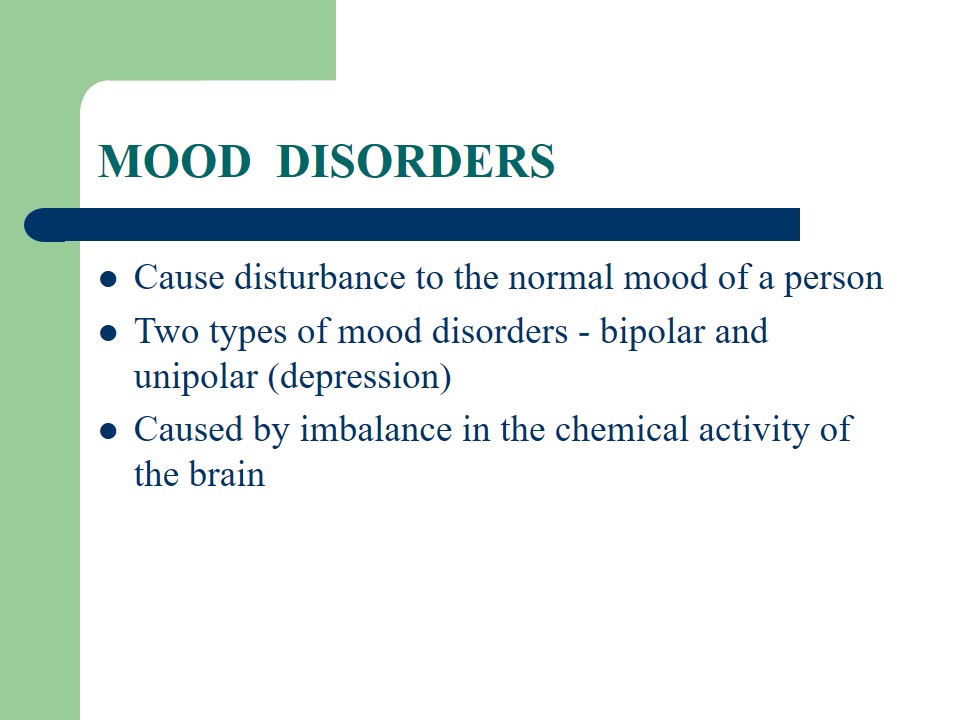
Schizophrenia
- Abnormal perception of real life situations.
- Mostly start at adolescence and early adulthood.
- Diagnosis based on patients behavior and the experiences.
- Belongs to Axis I and grouped into five.
- Several Causes.
Symptoms of paranoid delusions, hallucinations, confused speech and thinking of failure in the occupational field or the society.
The Groups are:
- Paranoid Schizophrenia – delusions and hallucinations but lack thought disorder.
- Hebephrenic Schizophrenia with both thought disorder and affective flattening.
- Catatonic Schizophrenia – Psychomotor disturbances.
- Undifferentiated Schizophrenia – only show psychotic symptoms.
- Residual Schizophrenia – show schizophrenic symptoms at a low intensity.
Contributing factors to the causes : Genetic factors, environmental factors, psychological factors, the social life and neurobiology.
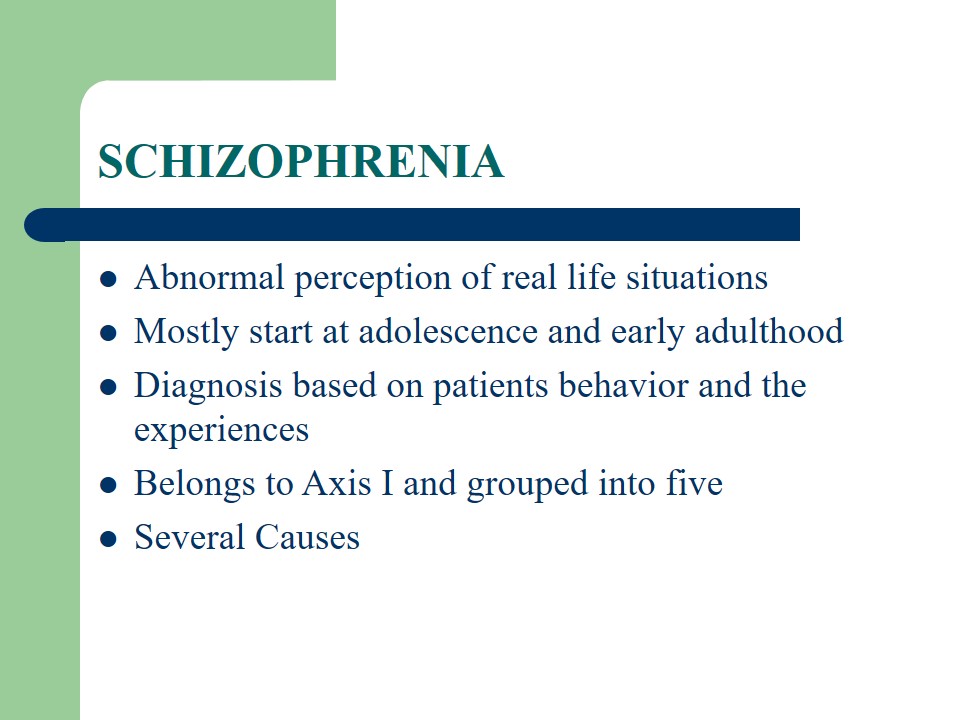
Personality Disorder
- Rigid patterns of thoughts and actions.
- Ego syntonic – late adolescence and early adulthood (rarely in childhood).
- Axis II – diagnosis is based on a specific criteria and various conditions.
- DSM classifies personality disorders into three clusters and a last group.
American Psychiatry Association defines personality disorder as the pattern with which the inner experience of a patient and the abnormal behavior is endured.
Example of one of the conditions in the criteria used to examine personality disorder is that a patient must show an inflexible and persuasive enduring pattern in a broad range of situations, both personal and social situations.
This group is known as Personality disorder Not Otherwise Specified (NOS).
Clusters:
- Cluster A include disorders such as schizotypal, paranoid and schizoid personality disorders.
- Cluster B are antisocial, histrionic, narcissistic and borderline personality disorders.
- Cluster C are avoidant, dependent and obsessive-compulsive personality disorders.
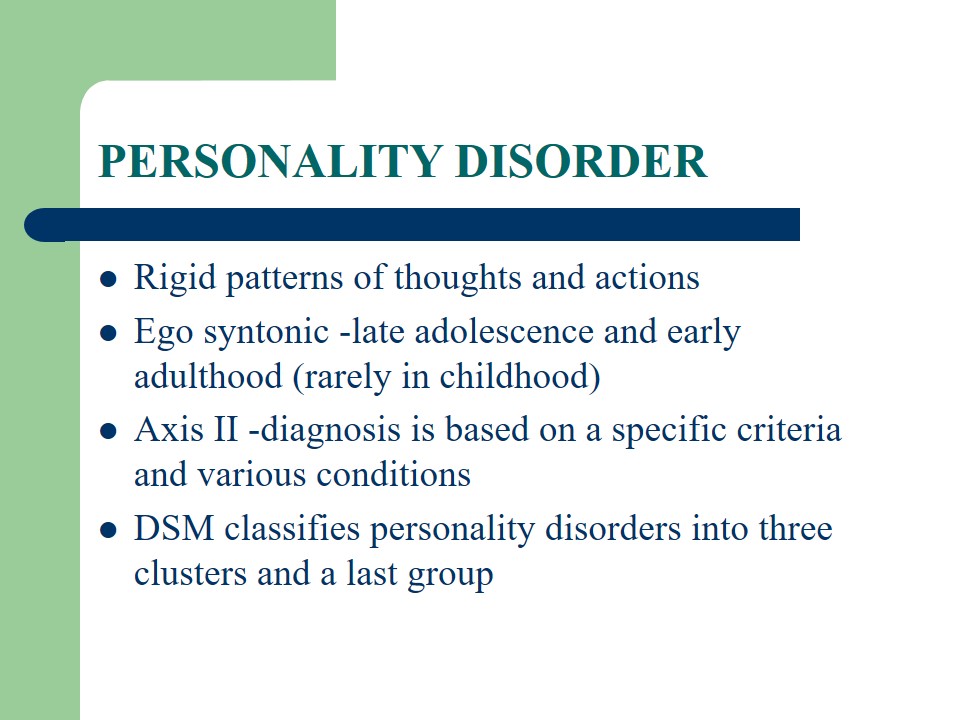
References
APA. 2000. The Manual of Mental Disorder Diagnosis. 4th ed. (text revision). Arlington, VA: Diagnostic Statistical Manual-IV-TR.
Theodore, M. and Davis, R. D. 1996. Personality Disorders: Diagnostic Statistic Manual -IV. New York: Wiley John & Sons, Inc, p. 226.
Spiegel, A. 2005. Explanations about Disorders, New Yorker.

